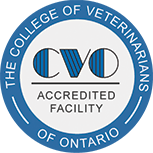Illustrated Articles
-
Mammary tumors develop due to abnormal reproduction of the cells that make up the breast tissue. They can be benign or malignant. The incidence of these tumors is related to hormone status, specifically whether a dog is intact or has had an ovariohysterectomy, age, and breed. Because dogs can have both benign and malignant tumors at the same time, surgical removal and histopathology of all tumors are very important.
-
Bile acids are compounds that are made in the liver and stored in the gall bladder and help with digestion of foods. The bile acid test is a very useful test that helps to determine if the liver is working properly. An abnormal bile acid test result indicates there is a problem in the liver, but it does not provide information about the cause, severity, or reversibility of the problem. Further testing is required to investigate the problem.
-
Bites wounds are one of the most common reasons dogs are seen for emergency appointments with their veterinarians. The dog's teeth and jaws are very powerful and the wounds they inflict can crush or tear muscles and skin, penetrate through the chest wall and cause lung collapse, or cause serious or fatal damage to intestinal organs. All bite wounds are considered to be contaminated and/or infected. Left untreated, the bacteria in an infected bite wound will cause a localized abscess or more generalized cellulitis that spreads through the surrounding area. All bite wounds should be treated by a veterinarian as soon as possible. Treatment will depend on the extent of the injuries, your dog's general health, and the location of the wounds.
-
Dogs appear to be more susceptible to blastomycosis than many other species. The blastomycosis fungus seems to target the respiratory tract, although it may spread throughout the entire body. Cytology and/or histopathology are required to diagnose blastomycosis conclusively. Itraconazole is the preferred drug of treatment for most dogs. Prognosis is good for many cases of blastomycosis infection with recovery rates between 50-75%.
-
Blepharitis (inflammation of the eyelid) can affect one or both eyes. The affected eyelid will usually be red, swollen, and itchy. Any condition that can cause irritation of the eyelids can lead to blepharitis. The numerous potential causes of this condition, along with the clinical signs, diagnosis, treatment, and prognosis are outlined in this handout.
-
Gastric Dilatation and Volvulus (GDV) is an acute life-threatening condition where the stomach fills with large amounts of air and then twists around effectively cutting off the outputs to the esophagus and intestine. It then continues to expand putting pressure on the mucosa, major vessels and diaphragm. Because of the constriction of major vessels returning to the heart, a dog will collapse from lack of oxygen and nutrients to vital organs. Underlying causes are still a mystery but most dogs affected are large breed, deep chested male dogs although any dog can experience GDV. There is a definite risk in dogs that have eaten large meals and then exercise. Bloat may be diagnosed by physical exam but radiographs and other testing is needed to show volvulus. Treatment involves decompressing the stomach with a stomach tube or a percutaneous catheter, shock treatment with IV fluids and emergency medications, surgery to correct the volvulus and identify and remove any necrotic areas of stomach or spleen. Mortality rate ranges from 15-40% in treated cases. There is no guaranteed prevention for GDV but gastropexy can reduce the risk. Attention to diet, feeding and exercise may also prevent gastric dilation.
-
This handout summarizes the possible reactions a dog may experience when receiving a blood transfusion. Many transfusion reactions occur acutely, within seconds of starting the transfusion up to 48 hours post-transfusion. The clinical signs and treatment protocols both vary based on the type of reaction. Prior to a blood transfusion, your veterinarian may perform tests to help ensure that the donor blood is a good match for your dog.
-
When traveling, you may need to board your pet at a kennel or veterinary clinic if friends, neighbors, or pet sitters are not an option. Ask for references to find a boarding facility and be sure to visit it before agreeing to have your pet stay there. A short stay before a longer trip can help your pet to settle in more easily. Be sure to leave emergency contact info for you and your veterinarian with the boarding facility.
-
Body condition scoring is an effective objective method of determining if a pet is at a healthy weight. There are 2 scoring systems: one out of 5 and the other out of 9. This handout outlines how to body condition score pets and recommends tracking body condition score to keep pets at a healthy weight, an important factor in pets living longer with less health complications.
-
This handout summarizes the most common forms of lameness in growing dogs. Included are osteochondritis dissecans (OCD), panosteitis, hypertrophic osteodystrophy (HOD), elbow dysplasia, ununited anconeal process (UAP), fragmented coronoid process (FCP), patellar luxation, and hip dysplasia. Clinical signs for each of these conditions, along with treatment options, is discussed.




